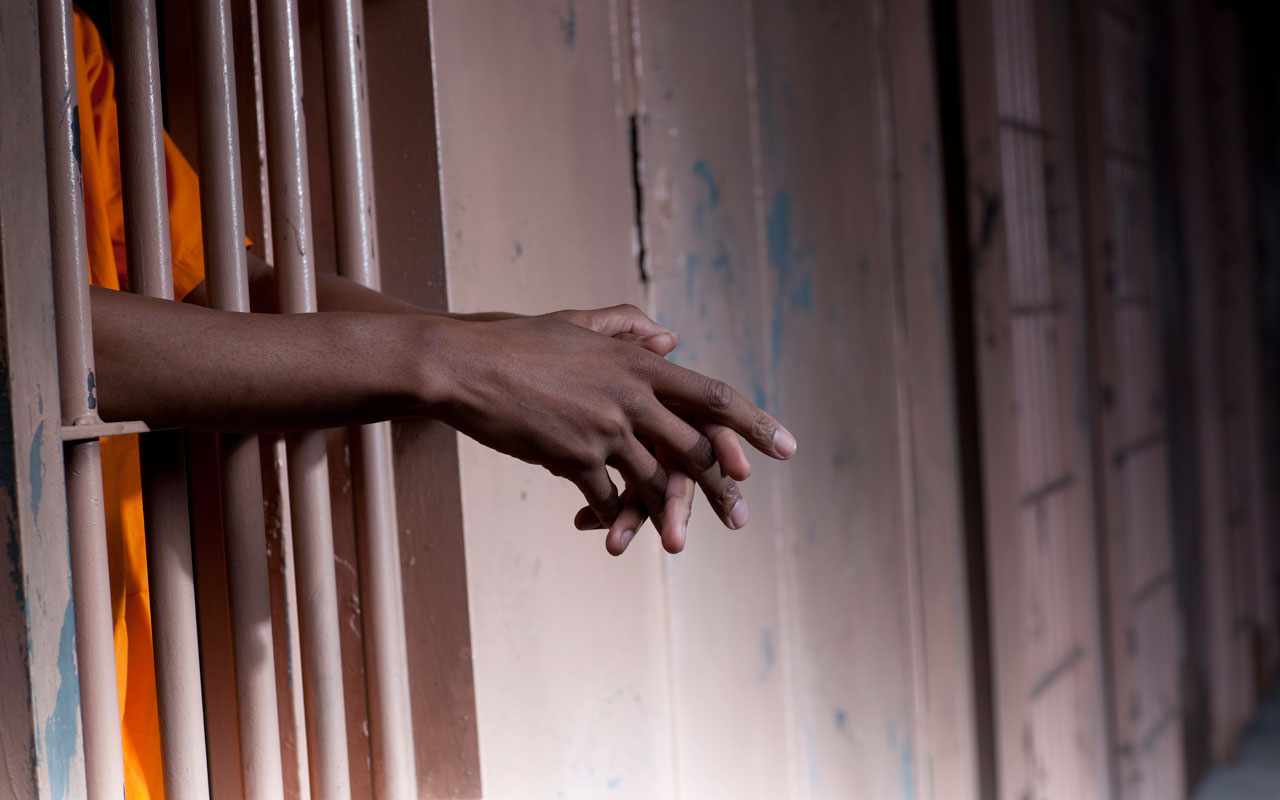The criminal justice system is one of the United States’ largest and most expensive institutions, but many citizens do not know the magnitude of its reach into society. The metaphoric “War on Drugs” declared by Nixon in the 1970s transformed into an actual war during Reagan’s presidency, and has since ravaged an overwhelming number of people of color. Here is a brief list of features of the criminal justice system that are crucial for realizing the extent of the damage it does to a large portion of the American populace.
1. The prison system has deep historical underpinnings
Historian H. Bruce Franklin points out that despite popular belief, slavery was written into the U.S. Constitution. Amendment 13 states, “Neither slavery nor involuntary servitude, except as a punishment for crime whereof the party shall have been duly convicted, shall exist within the United States, or any place subject to their jurisdiction.” Some might point out that “duly convicted” criminals deserve punishment for their crimes. But what about those during Jim Crow America who, as Franklin points out, were convicted of “vagrancy,” “loitering,” “using profane language,” “mischief” or “having no visible means of support?” What is worse is that most of these arbitrarily executed laws—or Black Codes—only applied to black Americans.
The fact of the matter is that slavery merely transferred from the private to the public sector. Convict leasing allowed for states to lease their prisoners to private firms, where prisoners were used as relatively free labor to improve broken, post-war infrastructure. With no incentive to treat the prisoners as human beings, employers could work them to death and continue to make a profit. Franklin notes that while convict leasing ended, “state use” and chain gangs emerged, continuing the maltreatment of unfairly convicted citizens. The historical roots that connect the prison system to slavery are indisputable, and what has subsequently permeated into modern society is indelible once examined.
2. People with drug offenses currently make up an exorbitant proportion of prison populations
Although it is widely believed that people in prison are dangerous and violent offenders, a large fraction of current prisoners were convicted of low-level drug crimes. In fact, research and advocacy group the Sentencing Project notes, “At the federal level, people incarcerated on a drug conviction make up just under half the prison population. At the state level, the number of people in prison for drug offenses has increased ten-fold since 1980.” To further put the number of drug offenses into perspective, “Most of these people are not high-level actors in the drug trade, and most have no prior criminal record for a violent offense.” Mandatory minimum sentences and three-strike laws allow for severe sentences for first-time and minor drug offenses.
One major disparity in drug sentences, however, is that certain drugs are weighted more than others. A famous—and still relevant—example is the difference in crack cocaine and powder cocaine charges implemented by the Anti-Drug Abuse Act of 1986, which states that possession of five grams of crack cocaine or five hundred grams of powder cocaine warrants a mandatory sentence of five years in prison. The significance of this one-hundred-to-one ratio is amplified by the inherent racial disparities between the two drugs at the time the law was passed. Crack cocaine was thought to be prevalent in poor neighborhoods of color, while powder cocaine was more expensive and often used by white people. While the Fair Sentencing Act was passed in 2010, lowering the one-hundred-to-one ratio between powder and crack cocaine offenses to only eighteen-to-one, there is still a disparity between two forms of the same drug. The racial difference in sentences was not an accident, which leads to the next point of discussion.
3. Race plays an inordinate role in the criminal justice system
Race evidently permeates the structure of the prison system, as both earlier points suggest. But the implications of the racially based system are far greater than meets the eye. African-American males, according to the Sentencing Project, are six times more likely to be incarcerated than white males—and this trend seems to only increase. Projections show, “If current trends continue, one of every three black American males born today can expect to go to prison in his lifetime, as can one of every six Latino males.” A crucial feature of this data is that drug use in the United States shows no statistically significant variance among races, according to many studies.
If drug use is largely equal among races in America, why are African-American and Latino men disproportionately convicted of drug crimes? The answer is redundant, but critical: the U.S. criminal justice system targets people of color, and has historically done so. Laws, prejudices and stereotypes depicted through media outlets help to reinforce a cycle of oppression of an entire group of people. Despite the continuous War on Drugs (read: War on poor men of color), a new class of individuals has in recent years become the fastest growing group sentenced to prison.
4. There are 716 percent more incarcerated women today than there were in 1980
Since around the time the Drug War began, the U.S. prison population increased from approximately three hundred fifteen thousand prisoners in 1980 to over two million incarcerated people in 2015, and that number has only increased since; however, from 1980 to 2014, women’s incarceration grew from about thirty thousand to roughly two hundred fourteen thousand. There are over two times as many black women in prison than white women, though this rate has been on the decline since 2000. Nevertheless, the increase in female incarceration has had devastating effects on communities.
Two-thirds of women in federal prison were convicted of non-violent drug crimes, and most of them are mothers. A 2012 study notes that almost 75 percent of women in correctional facilities were either the primary or sole caretakers of their children. When women are sent to jail or prison, their children are likely displaced or their relatives are saddled with extra mouths to feed and bodies to clothe. Children who have incarcerated parents suffer, as do their surrounding communities. While women in prison identify as a host of other things—artists, writers and hard-workers, among others—their role as mothers is especially important because of the severe effect that their incarceration has on children. The Drug Policy Alliance notes, “Children with a parent in prison are several times more likely than other children to end up in foster care, to drop out of school and to become involved in the criminal justice system.” The cycle of mass incarceration only continues within families because of the impact the prison system has on everyone within its reach.
The criminal justice system in America is broken. It creates more problems than it solves, if it solves anything. It locks people up for years on end for minor drug offenses. It tears apart families and communities. Current drug policy perpetuates systemic racism. Moreover, the issue at hand is not a partisan issue—most politicians put on a “tough on crime” mask that blinds them, and their supporters, to the underlying problems with the prison system. The U.S. cannot claim to be the world’s super-power when it holds more people in bondage than any other nation in the world.
It should be noted that this list of details is not at all exhaustive. In fact, it is only the tip of the pre-climate change iceberg. There are, however, many resources available for further exploration on the topic, such as the documentary, “13th,” Michelle Alexander’s groundbreaking book, “The New Jim Crow: Mass Incarceration in the Age of Colorblindness,” and the website cited above, “The Sentencing Project,” to name a few.

















